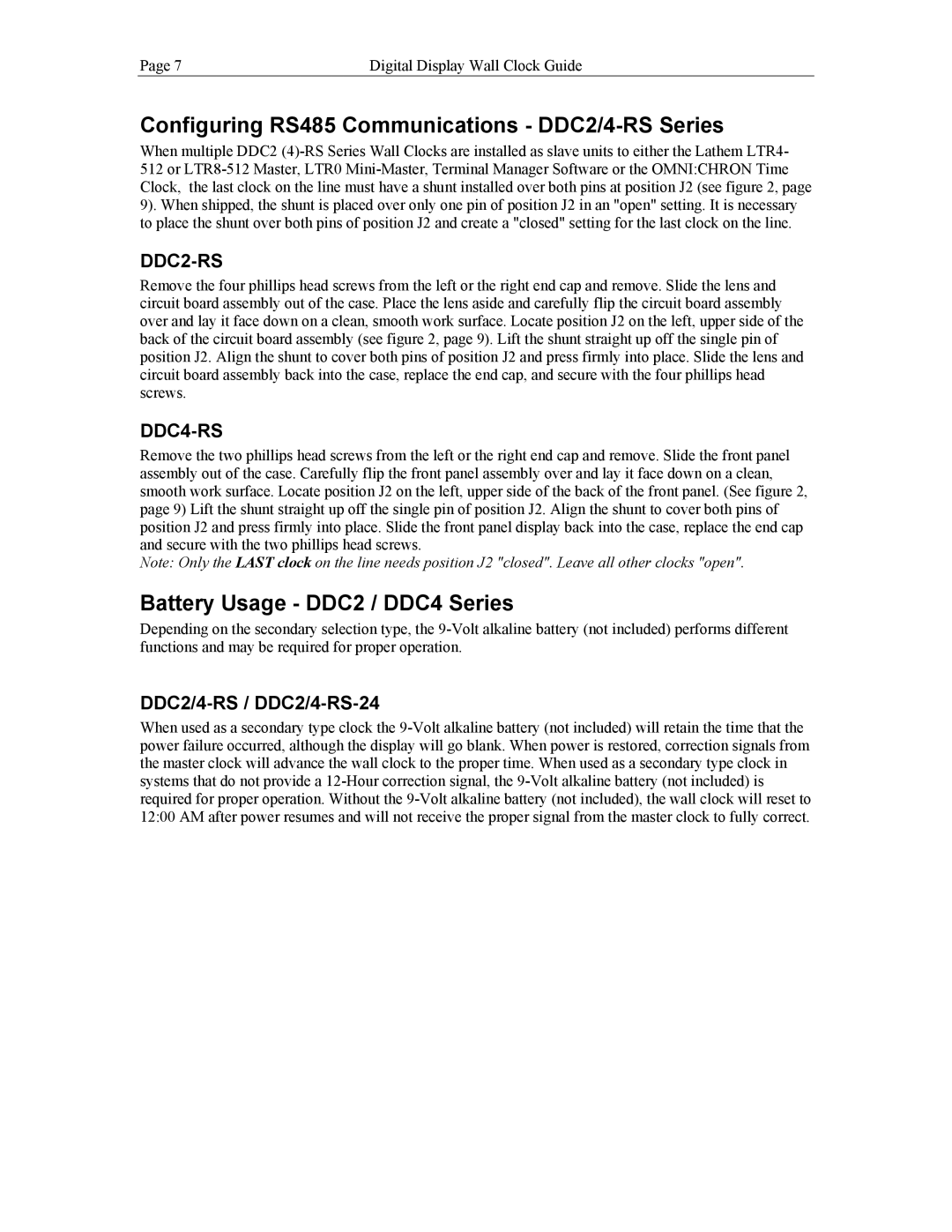Page 7 | Digital Display Wall Clock Guide |
Configuring RS485 Communications - DDC2/4-RS Series
When multiple DDC2
DDC2-RS
Remove the four phillips head screws from the left or the right end cap and remove. Slide the lens and circuit board assembly out of the case. Place the lens aside and carefully flip the circuit board assembly over and lay it face down on a clean, smooth work surface. Locate position J2 on the left, upper side of the back of the circuit board assembly (see figure 2, page 9). Lift the shunt straight up off the single pin of position J2. Align the shunt to cover both pins of position J2 and press firmly into place. Slide the lens and circuit board assembly back into the case, replace the end cap, and secure with the four phillips head screws.
DDC4-RS
Remove the two phillips head screws from the left or the right end cap and remove. Slide the front panel assembly out of the case. Carefully flip the front panel assembly over and lay it face down on a clean, smooth work surface. Locate position J2 on the left, upper side of the back of the front panel. (See figure 2, page 9) Lift the shunt straight up off the single pin of position J2. Align the shunt to cover both pins of position J2 and press firmly into place. Slide the front panel display back into the case, replace the end cap and secure with the two phillips head screws.
Note: Only the LAST clock on the line needs position J2 "closed". Leave all other clocks "open".
Battery Usage - DDC2 / DDC4 Series
Depending on the secondary selection type, the
DDC2/4-RS / DDC2/4-RS-24
When used as a secondary type clock the
